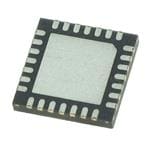Power over Ethernet (PoE) is the delivery of DC power along with data over short distances of Ethernet unshielded, twisted-pair cables and has evolved from proprietary solutions to inclusion in the IEEE802.3af standard of 2003, and again in IEEE802.3at of 2009 for PoE+. Ethernet data transmission requires two of the four available pairs in standard Cat5e/6 cabling. PoE can deliver power either over the remaining two spare pairs, over the data transmission lines by using signal transformers, or via both methods together for maximum wattage (PoE+). Via PoE, DC power is delivered to devices that are located near Ethernet cables, but where additional standard AC lines are either not possible or not convenient.
Today, PoE solutions exist that may or may not follow the IEEE802.3 standards regarding PoE. IEEE standards safeguard older technology (Ethernet-connected) devices that may not be expecting power by requiring handshaking and verification before providing power, and also protect against shorts and accidental polarity reversal. The standard describes how PoE injects power via Power Sourcing Equipment (PSE) and how downstream devices tap the power with a Powered Device (PD) Controller located at the device. PoE-powered devices are usually VoIP (Internet) phones, wireless access points, web cameras, and any other device that can use 13, 25.5, or 51 Watts of DC power over Cat5, Cat5e, or Cat6 cable. PoE capability can be embedded in a product or a product can be adapted with external PoE equipment.





